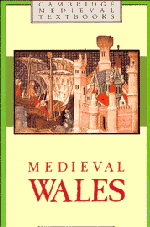Book contents
- Frontmatter
- Contents
- List of figures
- List of maps
- Preface
- 1 Wales in the dark ages
- 2 The Normans in Wales
- 3 The marcher lordships
- 4 The church in Wales
- 5 Crisis of identity: towards a principality of Wales
- 6 The Edwardian conquest
- 7 Under the heel: Wales in the fourteenth century
- 8 Resurgence and decline: the fifteenth century
- 9 A new dawn? The coming of the Tudors
- Select bibliography
- Index
- Cambridge Medieval Textbooks
- Frontmatter
- Contents
- List of figures
- List of maps
- Preface
- 1 Wales in the dark ages
- 2 The Normans in Wales
- 3 The marcher lordships
- 4 The church in Wales
- 5 Crisis of identity: towards a principality of Wales
- 6 The Edwardian conquest
- 7 Under the heel: Wales in the fourteenth century
- 8 Resurgence and decline: the fifteenth century
- 9 A new dawn? The coming of the Tudors
- Select bibliography
- Index
- Cambridge Medieval Textbooks
Summary
When the Normans began to settle in Wales they found a church which they could not easily understand and which was virtually without defence against their depredations. The clas church struck no chord of experience or memory. It was not obviously related to the church with which they were familiar. It did not match the monastic foundations which they took for granted. Though it had something in common with the minster churches of England, there was not time enough to take such comparisons into account. Norman invaders claimed many estates to which the church could make a claim. From the 1060s right through to the 1150s and 1160s, the diocese of St David's was being robbed of lands by Norman settler stock. For the southern dioceses of Llandaff and St David's, their depredations were part of a massive and long-drawn-out process of despoliation. The stages by which historians can trace the gradual build-up of a viable church structure in Wales extend over a long period of time, and they represent a large measure of repair and restoration.
In the earliest phases of conquest, the Normans used their successes to provide new endowments for monasteries which had attracted their patronage in France. William fitz Osbern gave churches and lands from his English and Welsh conquests to the two monasteries which he had founded in Normandy at Lire and Cormeilles. It is one of the indications that he was associated with lands in conquered territories that churches, lands and tithes were later to be found in the possession of these two abbeys.
- Type
- Chapter
- Information
- Medieval Wales , pp. 67 - 89Publisher: Cambridge University PressPrint publication year: 1990



